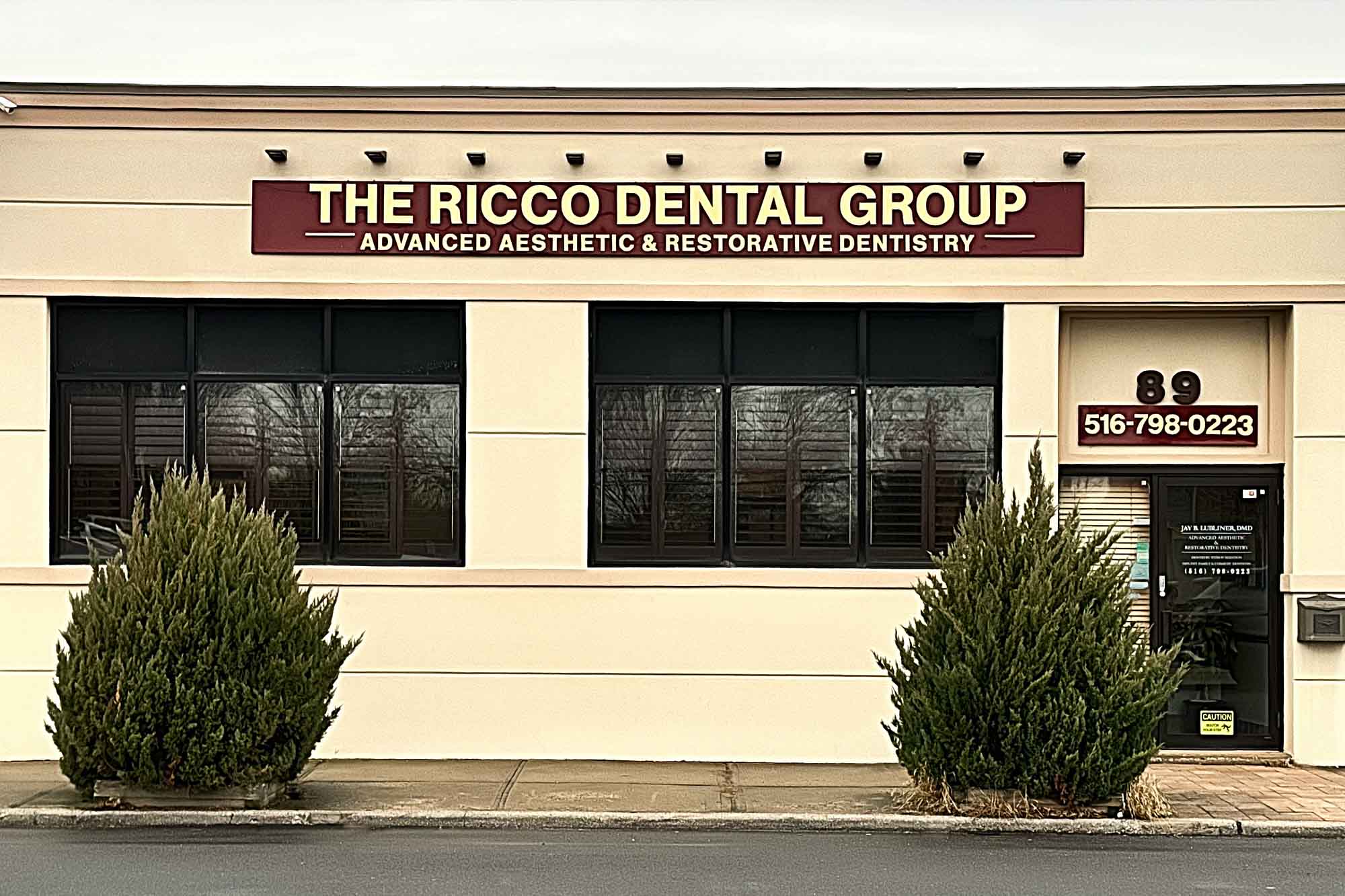Signs You May Need a Root Canal Even If You Don't Have Tooth Pain

Most people think severe tooth pain is the only warning sign of needing root canal therapy. While pain is certainly one indicator, we've found that many of our patients are surprised to learn they need treatment even when they feel perfectly fine. At The Ricco Dental Group, we regularly see patients who require root canal therapy despite having no obvious symptoms.
Understanding the subtle signs of tooth infection can help you seek treatment before a minor issue becomes a major problem. We'll explore the less obvious indicators that your tooth's pulp may be damaged or infected, why pain isn't always present, and what steps you should take if you notice any of these warning signs.
Understanding Root Canal Needs Beyond Pain
Why You Might Not Feel Pain
The absence of pain doesn't mean your tooth is healthy. Tooth pain occurs when infected or damaged pulp creates pressure inside the tooth. However, several factors can mask or eliminate this discomfort:
Chronic infections often become less painful over time. When bacteria first invade the tooth's pulp, your body responds with inflammation, causing intense pain. But as the infection progresses, the nerve tissue may die completely, eliminating the source of pain signals. This creates a false sense that the problem has resolved itself.
Drainage pathways can relieve pressure. Sometimes infected teeth develop small channels that allow pus and bacteria to drain, reducing internal pressure. You might notice a persistent bad taste in your mouth or see a small pimple-like bump on your gums near the affected tooth. These drainage points prevent the buildup of pressure that typically causes severe pain.
Individual pain tolerance varies significantly. We've treated patients with extensive infections who experienced minimal discomfort, while others feel intense pain from minor issues. Your personal pain threshold, stress levels, and overall health can all influence how you perceive dental problems.
Visual and Physical Signs to Watch For
Several observable changes can indicate root canal needs:
Discoloration tells an important story. A tooth that appears darker, grayer, or more yellow than surrounding teeth often signals pulp damage. This color change occurs when blood vessels inside the tooth break down, causing internal bleeding and tissue death. The discoloration may develop gradually, making it easy to overlook during daily oral care.
Gum changes around the affected tooth. Healthy gums should appear pink and firm. Watch for persistent swelling, tenderness, or recurring pimple-like bumps on the gums near a specific tooth. These symptoms indicate your body is fighting an infection, even when the tooth itself doesn't hurt.
Sensitivity patterns that seem unusual. Brief sensitivity to hot or cold foods is normal, but prolonged sensitivity that lingers after the temperature stimulus is removed suggests pulp damage. You might also notice sensitivity when biting down or applying pressure to the tooth during chewing.
Diagnostic Signs Your Dentist Recognizes
Professional Assessment Tools
During routine examinations, we use specialized techniques to identify problems you might not notice:
Percussion testing reveals hidden issues. We gently tap on each tooth with a dental instrument. A tooth requiring root canal therapy often produces a different sound or causes discomfort that you wouldn't normally experience. This simple test can detect inflammation or infection in the tooth's root area.
Temperature testing exposes nerve damage. We apply controlled hot and cold stimuli to individual teeth, monitoring your responses. Healthy teeth show brief, mild sensitivity that quickly disappears. Damaged teeth may show prolonged sensitivity, intense reactions, or complete lack of response, indicating nerve death.
Digital X-rays reveal internal problems. Modern dental imaging allows us to see infections, bone loss, or structural damage that's invisible during visual examination. We can identify dark spots around tooth roots, indicating bacterial infection, or internal resorption where the tooth is essentially dissolving from the inside.
Subtle Symptoms Patients Often Overlook
Many patients dismiss early warning signs as minor inconveniences:
Changes in taste or breath. Persistent metallic tastes, ongoing bad breath despite good oral hygiene, or noticing drainage from a specific area of your mouth can indicate bacterial infection. These symptoms often develop gradually, making them easy to attribute to other causes.
Intermittent discomfort that comes and goes. You might experience occasional aching, pressure sensations, or mild throbbing that disappears for days or weeks. These episodes often occur when your immune system is compromised by stress, illness, or lack of sleep.
Difficulty chewing on one side. If you unconsciously avoid chewing on a particular side of your mouth, or if certain foods cause mild discomfort, your body may be protecting a damaged tooth. This behavioral adaptation often happens gradually, making it difficult to recognize.
The Importance of Early Detection and Treatment
Preventing Complications Through Timely Care
Addressing root canal needs early provides significant advantages:
Preserving your natural tooth structure. Early intervention allows us to remove infected tissue while maintaining most of your tooth's original structure. Waiting until severe symptoms develop often means more extensive treatment and potentially weaker final results.
Avoiding systemic health problems. Untreated tooth infections can spread to surrounding tissues, jawbone, and even enter your bloodstream. We've seen cases where delayed treatment led to facial swelling, difficulty swallowing, and serious medical complications requiring hospitalization.
Maintaining comfortable function. Root canal therapy performed before severe symptoms develop typically involves less post-treatment discomfort and faster healing. Patients who receive early treatment often return to normal eating and speaking patterns within days rather than weeks.
Cost-Effective Treatment Approaches
Early detection often means simpler, less expensive treatment:
Single-visit procedures. When we catch infections early, we can often complete root canal therapy in one appointment. Advanced cases may require multiple visits, temporary medications, and additional procedures to ensure successful outcomes.
Avoiding tooth replacement costs. Saving your natural tooth through root canal therapy costs significantly less than extraction followed by dental implants, bridges, or partial dentures. Your natural tooth, properly treated and restored, can last many decades with appropriate care.
Preventing damage to adjacent teeth. Untreated infections can spread to neighboring teeth, potentially requiring multiple root canal procedures or extractions. Early treatment protects your overall oral health investment.
The Importance of Early Detection
Recognizing the need for root canal therapy extends far beyond waiting for severe tooth pain. The subtle signs we've discussed—tooth discoloration, gum changes, unusual sensitivity patterns, and intermittent discomfort—deserve professional evaluation. At The Ricco Dental Group, we believe in proactive care that addresses problems before they become emergencies.
We encourage you to schedule regular dental examinations where we can detect these early warning signs using professional diagnostic tools. Our gentle, comprehensive approach ensures that any necessary treatment is performed with maximum comfort and effectiveness. Remember, preserving your natural teeth through timely root canal therapy is almost always preferable to losing teeth and requiring replacement options.
Don't wait for severe pain to seek dental care. Early detection and treatment provide the best outcomes for your oral health, comfort, and long-term dental investment.
Frequently Asked Questions
How long can I wait if I notice some of these signs but don't have severe pain?
While the absence of severe pain might seem reassuring, we recommend scheduling an evaluation within a few weeks of noticing persistent symptoms. Dental infections can progress unpredictably, and what seems stable today may become an emergency situation. Early treatment is more comfortable, less expensive, and provides better long-term results than waiting for symptoms to worsen.
Can a tooth that needed root canal therapy years ago develop problems again?
Yes, previously treated teeth can sometimes develop new issues. Root canal therapy has a high success rate, but factors like new decay, cracked restorations, or additional trauma can compromise a treated tooth. We monitor all previous root canal treatments during regular examinations and can often detect problems before symptoms develop. If you notice any changes in a previously treated tooth, we recommend prompt evaluation.
The Ricco Dental Group provides root canal therapy along with comprehensive dental services in our modern Massapequa and Plainview offices. If you're experiencing any of the symptoms discussed in this article, we invite you to contact us for a thorough evaluation and personalized treatment recommendations.




